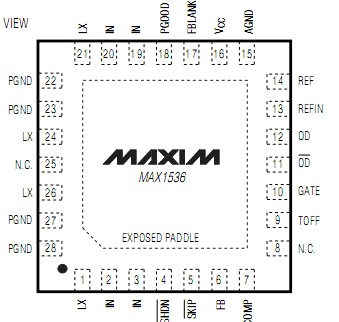MAX1536: Features: Dynamically Selectable Output Voltage from +0.7V to VINInternal PMOS/NMOS Switches 54m/47m On-Resistance at VIN = +4.5V 63m/53m On-Resistance at VIN = +3.0V+3.0V to +5.5V Input Voltage Ran...
floor Price/Ceiling Price
- Part Number:
- MAX1536
- Supply Ability:
- 5000
Price Break
- Qty
- 1~5000
- Unit Price
- Negotiable
- Processing time
- 15 Days
SeekIC Buyer Protection PLUS - newly updated for 2013!
- Escrow Protection.
- Guaranteed refunds.
- Secure payments.
- Learn more >>
Month Sales
268 Transactions
Payment Methods
All payment methods are secure and covered by SeekIC Buyer Protection PLUS.

 MAX1536 Data Sheet
MAX1536 Data Sheet







